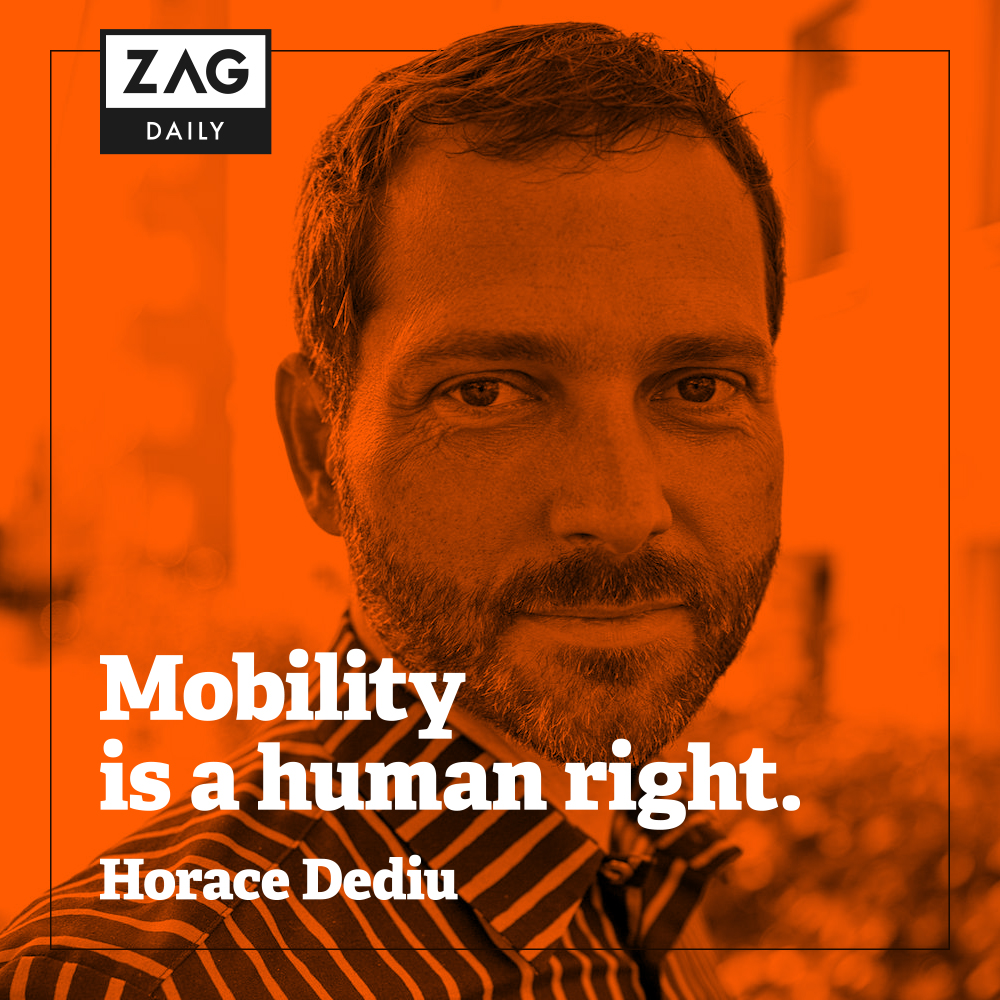Mobility visionary Horace Dediu talks to Zag Daily about the importance of micromobility in a post-pandemic world.
On the eve of Micromobility Europe, Zag Daily spoke exclusively to the event’s Co-Founder Horace Dediu about the big questions the industry must answer to succeed.
Dediu, who first coined the term ‘micromobility’, believes that these new forms of transport will become so ubiquitous as to be ingrained in society worldwide. In a wide-ranging interview he discusses what needs to happen next to achieve this goal.

Zag Daily: How do you define success in the industry?
HD: “The day we don’t talk about micromobility is the day we win. When we all just use micromobility because it’s such a natural thing to do.
“I’m arguing that the main reason we should be excited about micromobility is because it’s going to become ubiquitous. That means every man, woman and teenager will be using these vehicles. It’s inevitable. The reason this is inevitable is because mobility is a human right.”
Zag Daily: What is the micromobility industry missing?
HD: “What we need now is a global brand, a globally recognised leader and the defining global form factor.
“By global brand, I mean the brand that becomes synonymous with the sector. In the same way that the iPhone is synonymous with smartphones. Our industry needs a brand that is beyond the word itself.
“But this requires leadership. So I’m looking for the next Steve Jobs or Elon Musk of this space. That person is necessary for the brand to exist.
“The final hurdle is to find that winning form factor. That one vehicle type which resonates with most people. The beauty of micromobility is that we don’t have one vehicle type and, though I’m happy we have such diversity, we still need to create a synonym for micromobility in the form of a product. In the last few years e-scooters have been considered the form factor but people are still super interested in e-bikes, mopeds, sit-down scooters and so on. So I am waiting for the iPhone moment where we say ‘this is the right package’.”
Zag Daily: How do you begin to measure the sector’s growth?
HD: “It is hard to get a complete picture but we’re seeing a lot of data on the local side of things. We’re seeing streets being changed in cities, we’re seeing cars being deprecated. The word deprecation means considered harmful, so cars are being considered harmful and it’s a snowball effect.”
Zag Daily: So cars need to be framed in a negative light?
HD: “Yes, the problem with automobility needs to be seen as a crazy way of getting around in the city, which involves carrying a lot of armour and weight. Having the potential to go fast and having the potential to go far, but not doing either. This means you’re carrying around excess potential or excess capacity. We call this over-serving.
“Let’s observe the fact that most journeys are short, most journeys are slow, most journeys don’t involve carrying things or passengers and yet we see people driving trucks a mile down the road. Why do you need a truck with a huge amount of capacity, terrible fuel economy and terrible impact on the environment? By framing it that way, you start to ask why do we do that? It’s absurd and yet it’s normal. It’s what everyone does and doesn’t question. So just by using the term micromobility you start to ask what’s the alternative? The alternative to automobility. It’s all in the language.”
Zag Daily: Can you explain your ‘unbundling’ of the car concept?
HD: “The car needs to be unbundled, not in terms of it becoming multiple pieces, but the multiple things we use a car for need to be broken up.
“If you’re doing a small shop then you might use a cargo bike, if it’s just one object you need then you might use a regular bike or even an e-scooter. If you need to transport people then maybe use a car but if you just need to transport yourself then perhaps you use a different vehicle. This is the way we need people to think. The reason we don’t think this way is because of the convenience factor of cars – they do everything.”
Zag Daily: Ahead of Micromobility Europe, can you summarise where the industry is at now?
HD: “We’ve had shocks to the global system in terms of supply chain, shocks in terms of energy pricing, inflation, and the remarkable thing is that micromobility has come out stronger. But guess who needs more – it’s automobility that needs more lithium, more cobalt, more steel, more energy to manufacture billions of vehicles. All the things that are causing stress to society are strengthening micromobility, which means by definition micromobility is antifragile. The more stress put upon it, the stronger it gets, whereas automobility is fragile, the more stress put upon it, the weaker it gets. So the ideas around micromobility are percolating to the highest levels now, and I’m very much looking forward to our event in Amsterdam to help ensure these ideas continue on the same trajectory.”
